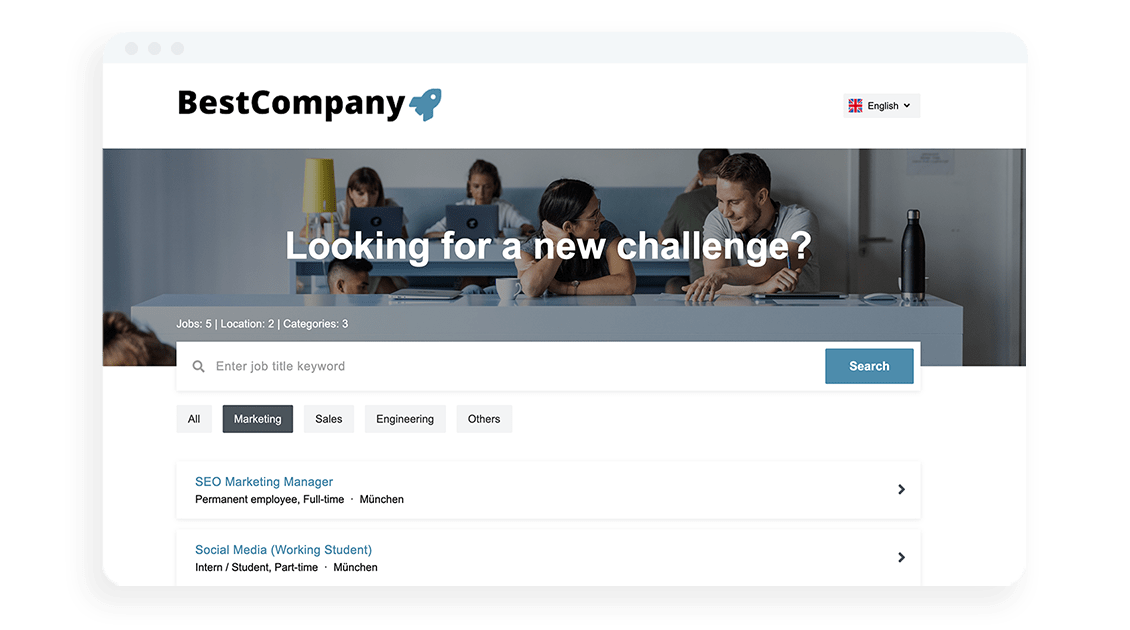
HR Business Plan Template
Unlock executive buy-in with our HR business plan template.
Get the templateWhat's Really Driving the Labour Shortage in the UK?
Are you struggling to make quality hires in the UK? You’re not alone. According to a survey by the British Chambers of Commerce, 82% of companies experienced recruiting difficulties in Q4 2022, up from 76% in Q3.
In this article, we’ll explore the numbers to find out what’s going on with the labour shortage in the UK — and discuss what employers can do to combat it.
Help your organisation become 'Recession Ready.' Download our guide today.Is There a Labour Shortage in the UK?
There are currently around 1.12 million job vacancies in the UK. This is a slight decrease compared to the previous quarter, but the number is still far higher than it was before the pandemic. The number of unemployed people has also slightly decreased and currently sits at 1.25 million.
Although there are more unemployed people than there are vacancies, those numbers are very close together. Put simply, that means that there are not very many people to go around.
Under these circumstances, roles that are niche or specialised become even more difficult to fill. That means we don’t just have a labour shortage on our hands, but a skills shortage too.
These two problems are interlinked but come with their own unique challenges:
A labour shortage makes it harder to find people to hire
A skills shortage makes it harder to find the right people.
Both, especially together, can have a significant impact on business: according to a recent report, 78% of UK organisations say they’ve seen reduced output, profitability or growth due to skills shortages.
What Are the Factors Causing a Shortage of Labour?
Here are some of the factors driving the UK labour shortage in 2023:
1. Shift in Labour Supply and Demand Since the Pandemic
In its simplest form, a labour shortage happens when there’s a difference between the demand for labour and the supply that’s available on the market. Labour demand is measured by adding together the number of employed people, plus the number of vacancies. And labour supply is those that are unemployed, plus those who are employed.
Currently, the demand for labour is above pre-pandemic levels, but labour supply is lower than it was before the crisis. A big reason for this is that there has been a sharp increase in people who are ‘economically inactive’. That means they are not working and not looking for a job.
There are a few reasons driving this, but one major contributor is that around half a million people have left the workforce since the start of the pandemic due to long-term sickness.
Create a great candidate experience

Organise applications, plan interviews and quickly evaluate candidates. Manage your entire hiring process with one tool with Personio.
Unlock Smoother Hiring2. A Rise In Early Retirements
In early 2022, the ONS surveyed adults aged between 50 and 70 who had left the workforce since the beginning of the pandemic. The survey found that 63% of them had left work sooner than expected — and many have not returned.
Just over half of the respondents (53%) gave reasons for leaving their job other than retirement. However, a larger proportion (62%) later gave retirement as a reason why they hadn’t returned to work. This suggests that many people left or lost their jobs, and then subsequently decided to retire.
That said, there is some evidence that this trend is changing. When we look at the latest ONS figures for those who are economically inactive, there has been a slight decrease in the latest quarter driven by people inactive because they are students or retired. This suggests that at least some of those early retirees have returned to work.
There has even been talk of a ‘Great Unretirement’, which could help businesses to manage labour shortages. Certain companies, including EasyJet, Halfords and Mcdonald's have even launched specific recruitment campaigns targeting over-50s.
3. The Impact of Brexit on Labour Supply
The decrease in immigration to the UK after Brexit has also had an impact on labour supply. In fact, according to research published in January 2023, it has led to a shortage of around 330,000 workers in Britain.
According to the report, around 460,000 more EU-origin workers would have moved to the UK if Brexit hadn’t happened. There has also been an increase of around 130,000 workers coming from outside the EU, although this hasn’t been enough to completely cancel out the shortage of EU workers.
It’s also worth noting that non-EU workers tend to work in more skilled sectors of the economy, like healthcare, education and ICT. In these roles, non-EU workers have more than compensated for the loss of those from the EU.
But the shortage of EU workers has made it much harder for employers to find candidates for less skilled roles. Here are the sectors that have been most severely affected by shortages since Brexit:
Sector | Shortfall of workers | Percentage of total employment in that sector |
Transportation and haulage | 128,000 | 8% |
Wholesale and retail | 103,000 | 3% |
Accommodation and food | 67,000 | 4% |
Manufacturing | 47,000 | 2% |
Construction | 46,000 | 2% |
Administration and support | 32,000 | 2% |
What Is Being Done to Address the Shortage?
There are certain things that governments can do to combat labour shortages, particularly related to immigration. Here are some of the things that the UK government has done so far.
Looser Visa Requirements for In-Demand Professionals
The government has published a list of occupations experiencing labour shortages in the UK, which was compiled by an independent group of experts. The idea is to make it easier for immigrants fulfilling in-demand roles to come to the UK, by lowering visa requirements.
There are around 30 different professions on the list, and there’s also a separate list for roles in healthcare and education. The government has also recently added some jobs related to construction to the list, including plasterers, bricklayers, carpenters, joiners and roofers.
Increase of Seasonal Worker Visas
The UK has been experiencing labour shortages in the agricultural sector that have, in some cases, led to food being left unpicked. To combat this, the government has increased the number of seasonal worker visas it issues to 45,000 per year. This is an increase of 15,000 from the previous year, although the National Farmers’ Union has said that it is still not enough.
How Can Employers Combat the UK Labour Shortage?
Labour and skill shortages make sourcing and hiring the right people difficult — but there are ways to increase your chances of attracting the best talent, even when the labour market is tight.
Rethink Your Hiring Process
In the face of labour shortages, organisations need to radically rethink their hiring processes. In some ways, companies now have to ‘apply’ for employees as much as those employees are applying for jobs. That means that you need to be working hard to impress candidates in every stage of the recruitment process — or they’ll simply go somewhere else.
Work to Attract and Retain Over 55s
As we’ve mentioned, older people dropping out of the workforce early could be a key driver behind the UK labour shortage. But according to an ONS survey, 58% of people aged 50–65 who have left work since the start of the pandemic would consider returning.
When asked to list the most important factors they would look for in a job, they mentioned flexible working hours (32%), good pay (23%) and the ability to work from home (12%). That means that making these elements a key part of your EVP could be a good strategy for attracting older workers.
Think More Than Just Pay
In a competitive market, it’s likely that you’ll have to increase salaries if you want to attract the best talent. But it’s also important to remember that salary is only part of an employee’s compensation.
You might be able to gain a competitive advantage by including benefits like flexible hours, additional leave, stock options and wellness support. Plus, offering competitive benefits isn’t just a great way to attract new employees — it can also help you to retain the ones you have.
Upskill and Reskill Employees
The skill shortage means it’s now more important than ever to get the most out of your workforce. You could start by conducting a skills gap analysis to determine the skills that are missing from your organisation. Then, you can deliver training programmes to upskill and reskill your employees.
This allows you to fill organisational skills gaps without needing to make new hires. It also shows your employees that you value them and that you’re invested in their future — which could make them more likely to stick around for longer.
Help your HRBP to unlock executive buy-in

Download our HR Business Plan Template to help your HRBP pull together a plan that earns executive support.
Get the templateImprove Every Stage of the Employee Lifecycle With Personio
If you’re serious about attracting the best employees (and retaining the ones you have), you need to optimise every stage of the employee lifecycle — and a next-level HRIS like Personio can help.
Personio can help you to automate, simplify and streamline key processes throughout an employee’s journey with your organisation, giving them a positive and consistent HR experience from day one. Plus, outsourcing repetitive tasks to a smart HRIS can give HR teams back the time they need to focus on what matters: people.
That means you’ll have more time to make sure every employee’s experience with your organisation is the best it can be — giving you a better chance of retaining them for longer.
Want to learn more about Personio? Book a free demo to get started.
